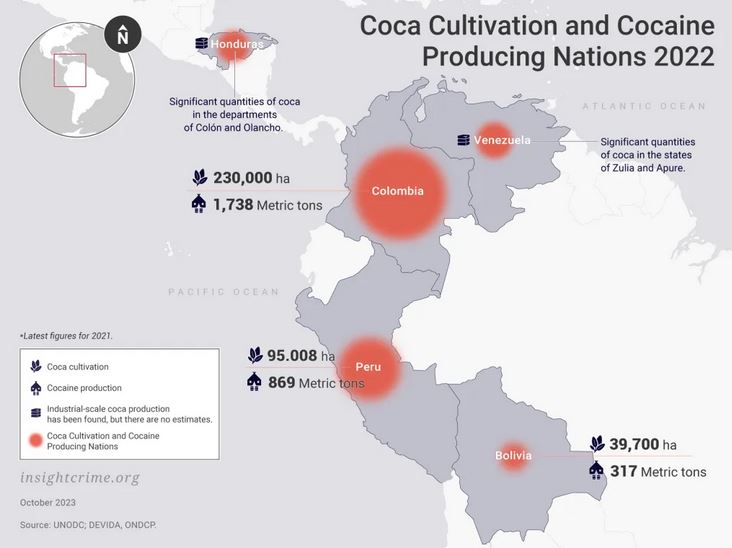Why in the News?
Colombia, the global center of the cocaine industry, is undergoing significant changes due to domestic and global forces.
Recent Changes: Disruption in Cocaine Trade
|
About the FARC Peace Deal
- It refers to the agreement reached between the Colombian government and the Revolutionary Armed Forces of Colombia (FARC) to end decades of conflict. It is a significant milestone in Colombia’s efforts to achieve lasting peace and stability.
- FARC is a Marxist-Leninist guerrilla group founded in 1964 that waged an armed struggle against the Colombian government for over five decades.
- The conflict resulted in over 220,000 deaths and the displacement of millions of people, making it one of the longest-running conflicts in Latin America.
- A peace deal was signed on November 24, 2016, and subsequently ratified by the Colombian Congress.
How does the peace deal impact Columbia?
- The FARC financed its war through cocaine, relying on farmers to provide coca leaves.
- After the FARC left the cocaine industry, smaller criminal groups took over, adopting a new economic model.
- These groups buy large quantities of coca from fewer farmers and limit operations to border regions for easier drug transport.
- The shift in the drug trade has left the communities economically devastated.
Cocaine Production in Latin America:
|
Implications on India:
- Changes in the Colombian cocaine industry may alter global drug trafficking routes.
- India, as part of the global drug trade network, could see changes in the routes used to smuggle cocaine into the country.
- Increased cocaine production globally could lead to a higher availability of the drug in India.
- This could result in an increase in drug trafficking activities within the country visible in increased seizures in major cities like Pune.
- Higher availability of cocaine could lead to an increase in drug abuse cases in India.
PYQ:[2018] India’s proximity to the two of the world’s biggest illicit opium-growing states has enhanced her internal security concerns. Explain the linkages between drug trafficking and other illicit activities such as gunrunning, money laundering and human trafficking. What counter-measures should be taken to prevent the same? |


